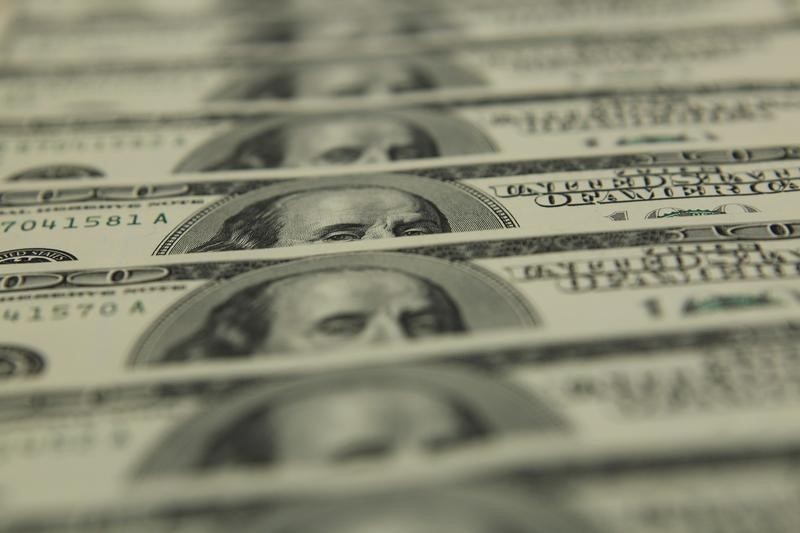“Plateau is a noun or verb that means a usually extensive land area having a relatively level surface raised sharply above adjacent land, or a similar undersea feature.” (From “Meriam-Webster”)
Introduction
The current Uptrend started on March 31, 2023, but the PPO approach has tracked it since September 2022. For 14 months, the upward movement of the momentum/trend was rocky, and some on-and-off situations were observed.
Since October 30 (Monday) the U.S. Economy, represented by SPY (or the S&P 500 Index) has advanced strongly and consistently. Bearish investors may claim that it’s a “bear-market rally”, which is short-living. Bullish investors, on the other hand, can assert that we finally arrived on a “bull plateau” after the very lean market from 2020 to 2023.
The Focus
The post is not looking back at the process of reaching a bull plateau. It is rather looking forward about how to optimize market trading, assuming a bull plateau is real and is expected to continue for a couple of years.
David Ricardo and Jesse Livermore
Some 200 years ago the classical economist David Ricardo’s imperative to “cut short your losses” and “let your profits run on” suggested trend following. The legendary trader Jesse Livermore stated that the “big money was not in the individual fluctuations but in sizing up the entire market and its trend.” The most basic trend following strategy is going long markets that are going up and shorting those going down. (Wikipedia)
In the late 1950s I met David Ricardo when I read John Maynard Keynes’s “General Theory”. Ricardo (1772 – 1823) was actually a great economist between Adam Smith (1723 – 1790) (“Wealth of Nation”) and Keynes (1883 – 1946).
Therefore, I never thought of Ricardo in the angle to the stock investor which I have endeavored in for almost three decades. Ricardo and me might share the same profile: A good stock-market investor.
I never encounter the name of Jesse Livermore. He was considered a pioneer of day trading. At one time, Livermore was one of the richest people in the world; however, at the time of his suicide, he had liabilities greater than his assets.
“In a time when accurate financial statements were rarely published, getting current stock quotes required a large operation, and market manipulation was rampant, Livermore used what is now known as technical analysis as the basis for his trades.
Some of Livermore’s trades, such as taking short positions before the 1906 San Francisco Earthquake and just before the Wall Street Crash of 1929, are legendary within investing circles.” (Wikipedia)
Keeping Ricardo’s sound market wisdom and Livermore’s failed legacy, I want to review what we are doing in the current market which is relatively manipulation free, online investing, and in an established uptrend.
“Uptrend” vs. “Plateau”
When several momentums are piled up, we can visualize an uptrend. As uptrend ages, we can observe “Punch Ball’ or “Ratchet Operation” so we can depict that an uptrend is lifted on a plateau.
What’s the difference between an uptrend and a bull plateau?
First, an uptrend is an ascending market while a bull plateau is coined a “vaulted securities” where major securities are fully priced at their near 52-week highs.
Second, an uptrend changes its vigor or its growth rates. In a plateau, however, the prices of most securities remain in a very tight range, but during a given session, some selected securities fluctuate widely and promptly, in some cases, ups and downs several times in a session, affected by sudden sector rotations due mainly to some big block orders made by Bot-trade, institutional or rich investors. Quite ironically, bears and bulls are working together: The former keep shorting while the latter keep buying, not just once, but repeatedly several times. (Some 7-round trading of a security were experienced about 7 years ago, and a couple of round trading were made recently.) Both bears and bulls made money on their light-and-multiple shorts or longs. Who would lose money? Both bears and bulls who shorted or bought one-time very heavily: The former would buy back, taking losses, when the market persistently moved up, and the latter also would not make much money because the market would not move up significantly.
Third, Ricardo and Livermore invested in an uptrend, but not on a plateau. A plateau trading has become popular in 21st century where major trading is online with the instant quotes. For the uptrend trading, the current online trading takes a-few-second (or a few sessions) mostly, but Ricardo and Livermore took several months or several years.
A Typical Plateau Trading
If any bullish investors deploy their capital from short-term fixed income accounts, and allocate their money in the equity and bond ETFs (Exchange Traded Mutual Funds) in a long term (in around 5 years), It’s a good investment if their ages are younger than 65.
If they select any securities (such as, any stocks or stock/bond ETFs), expecting a gain in a near future (in three months, for example) with more than 70% of their capital (or, worse, adding margin loans), it’s a highly risky venture.
In a sense, in an uptrend and on a plateau, the way of making money is the opposite each other. In other words, we can make money with well diversified portfolios in the long term in an uptrend. But on a plateau, we can make money with a near term (in a few seconds or in a few sessions) with well-selected individual stocks or ETFs.
The most crucial elements of success on plateau trading are 1) speed, 2) accuracy, 3) a contrarian attitude, 4) no leverage, and 5) discipline.
1) Speed
This is the most important requirement. Speed of reading, typing, order-executing are important, but speed of money transfer between brokerage accounts and online savings accounts are vital. The money in brokerage accounts makes money but yields no interest. Currently online savings earn 4.4% APR (annual percentage rate) with some minor restrictions.
2) Accuracy
Order executions are better to be simple and standardized to avoid any costly error which causes a big bite of gain. Try to make a simple trading framework for a) the size of buying costs and selling proceeds, such as $1K or $2K, and b) the threshold of selling, such as +1% or +2%, and 3) the timing of tax-harvesting sell.
3) A Contrarian Attitude
We have to minimize risk by conservatively managing trading performance and required investment capital daily. If we have some significant gains, some amount of cash in the brokerages transfer to online savings by ACH (Automated Clearing House) which is free, safe, and prompt (mostly taking one day or the same day) Or when we need more investment capital, online savings transfer back to brokerages.
4) No Leverage
There is No MOS (No Margin, No Option, and No Short).
5) Discipline
Investing results depend largely upon several virtues such as a) diligence, b) total concentration, c) flexibility, d) firmness towards the setting goal, etc.
The Market Perspective in 2023 and Beyond
Today (Nov 24, 2023), the market, as defined by the S&P 500, hasn’t moved up much. But it has moved a lot since late October. Entering today, the S&P 500 was up 11.0% from its October 27 low.
Today’s lack of movement can be attributed to a general lack of trading interest, at the shortened session after Thanksgiving. As shown in Table 1, in November, the advancing days outnumbered the declining days by 14 vs. 3.
As a consequence, the uptrend and the bull plateau have become more solid, anticipating the year-end rally. The market strength in turn will give a strong- spillover effects on the real GDI (Gross Domestic Income) and GDP (Gross Domestic product) via the more generous Wall Street bonuses, and the ensuing robust consumption.
|
Table 1. Nov (24) : S&P 500 |
|||
|
(Oct 31 – Nov (24), 2023) |
|||
|
10/31/23 |
4,193.80 |
* |
* |
|
11/01/23 |
4,237.86 |
1.05% |
* |
|
11/02/23 |
4,317.86 |
1.89% |
* |
|
11/03/23 |
4,358.34 |
0.94% |
* |
|
11/05/23 |
4,365.98 |
0.18% |
* |
|
11/07/23 |
4,378.38 |
0.28% |
* |
|
11/08/23 |
4,382.78 |
0.10% |
* |
|
11/09/23 |
4,347.35 |
-0.81% |
* |
|
11/10/23 |
4,415.24 |
1.56% |
* |
|
11/13/23 |
4,411.55 |
-0.08% |
* |
|
11/14/23 |
4,495.70 |
1.91% |
* |
|
11/15/23 |
4,502.88 |
0.16% |
* |
|
11/16/23 |
4,508.24 |
0.12% |
* |
|
11/17/23 |
4,514.02 |
0.13% |
* |
|
11/20/23 |
4,547.38 |
0.74% |
* |
|
11/21/23 |
4,538.19 |
-0.20% |
* |
|
11/22/23 |
4,556.62 |
0.41% |
* |
|
11/24/23 |
4,559.34 |
0.06% |
* |
|
NOTE |
|||
|
1 Data Source: Nasdaq. |
|||
|
2.Author Made Table. |
|||
The Conclusion
Most investors have recouped piecemeal every session. every week, and every month since Oct 30. We are not big players in the market, but we have succeeded in accumulations of some financial resources every year in a long term, except in the past 3 years or so.
Our investment journey will continue, in the good time as well as in the bad.
Happy Holidays to all investors, bears or bulls.
Read the full article here












